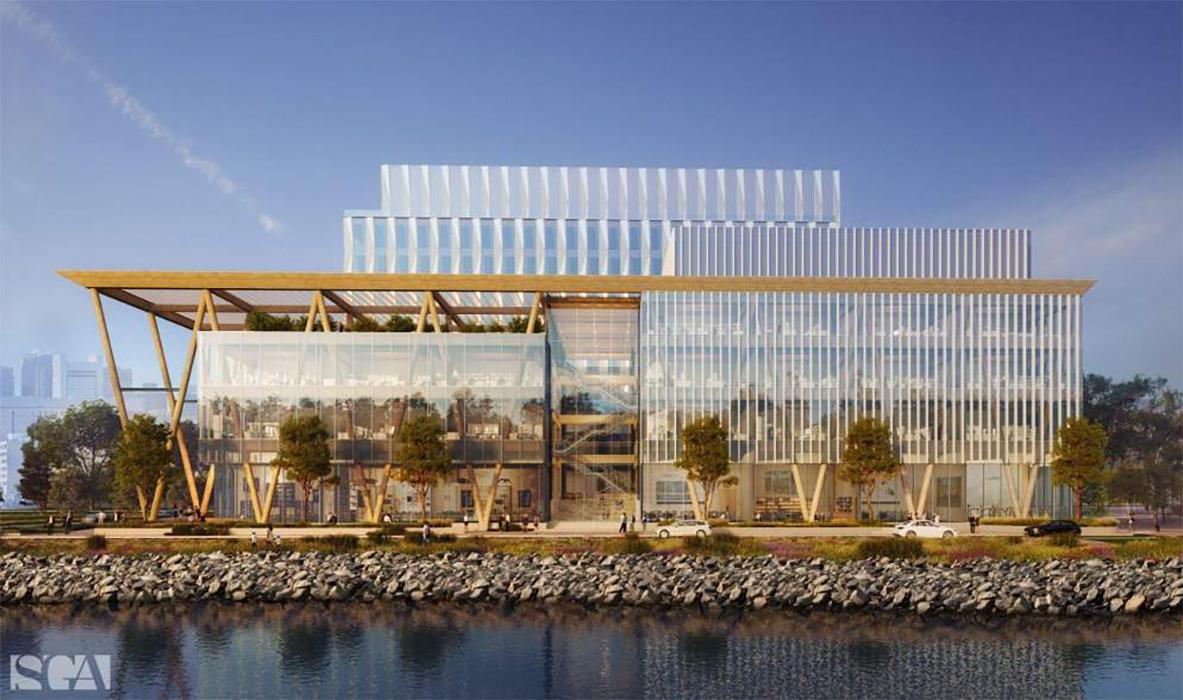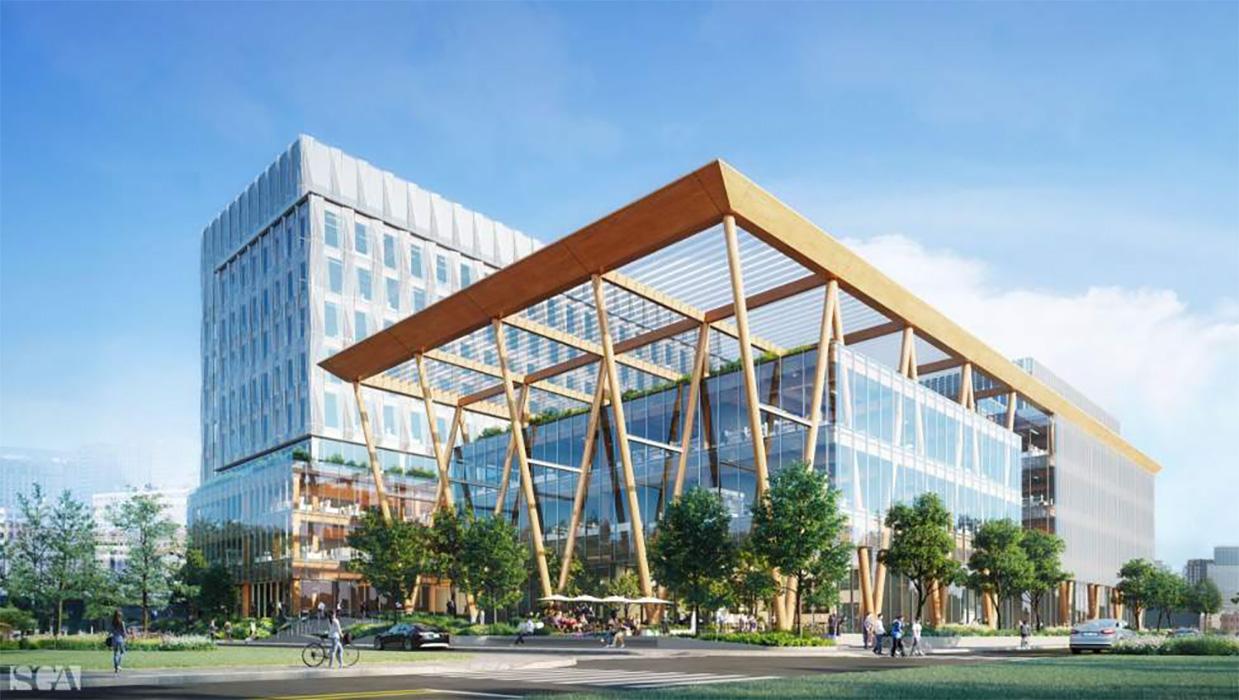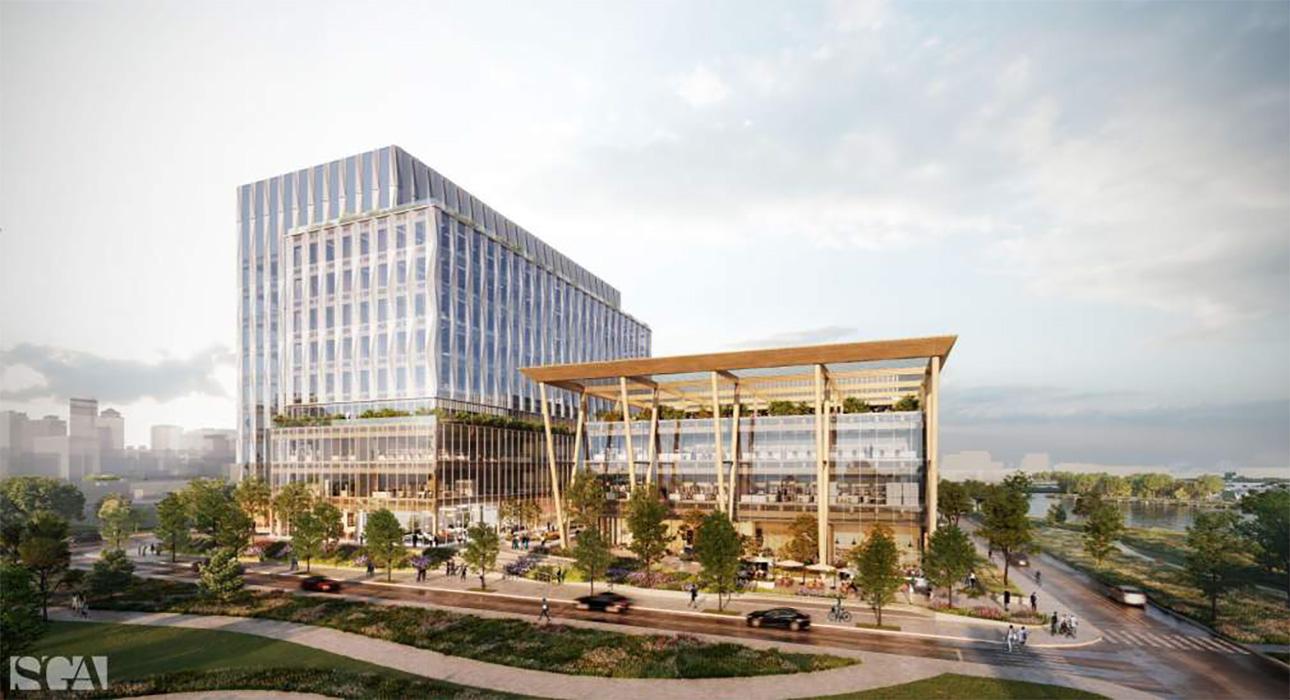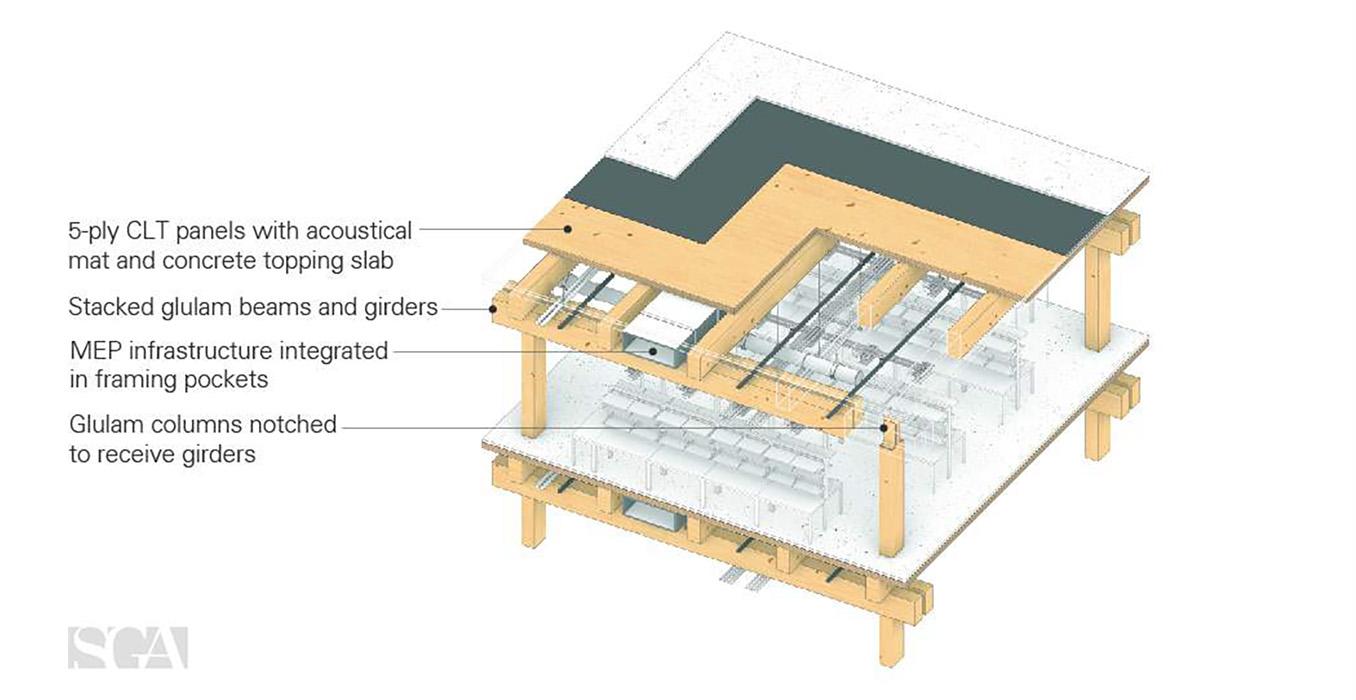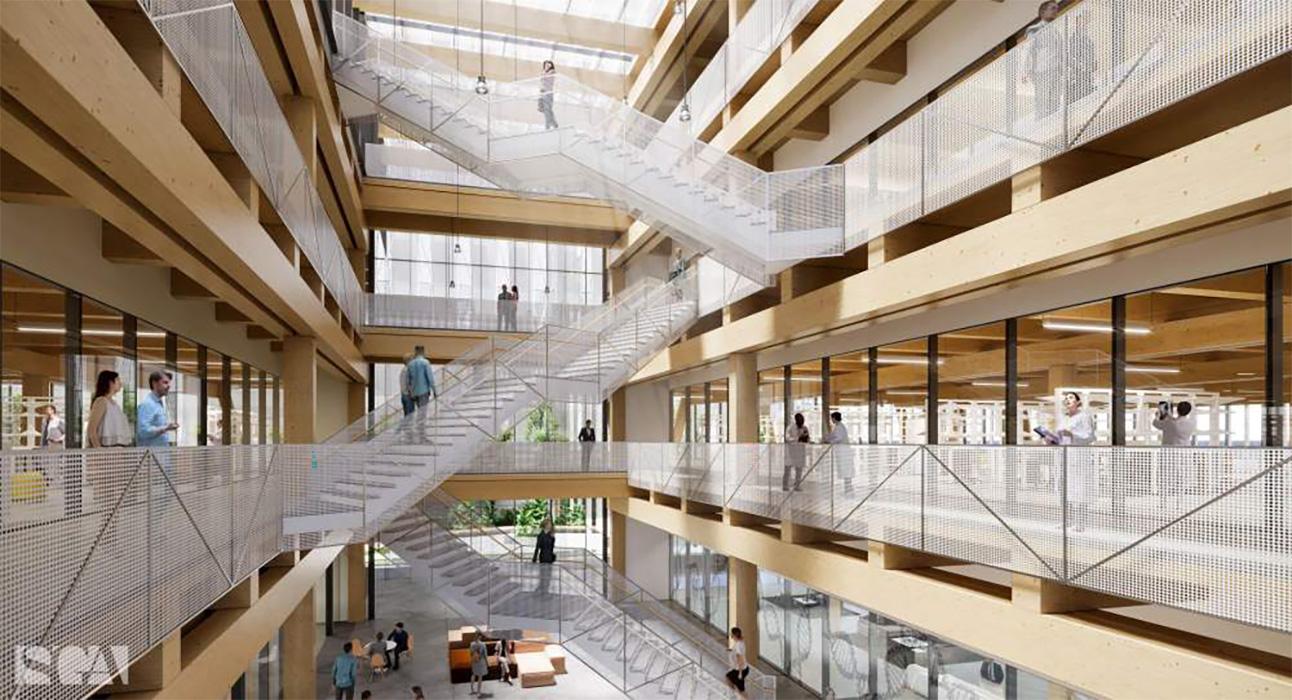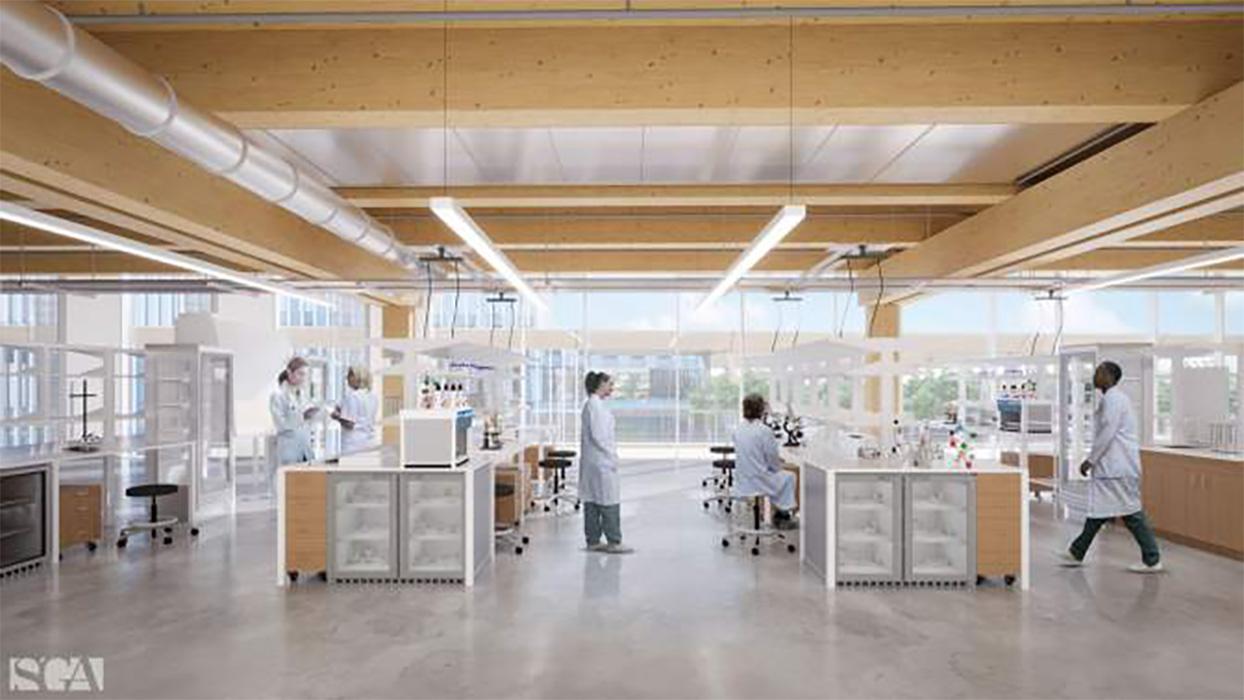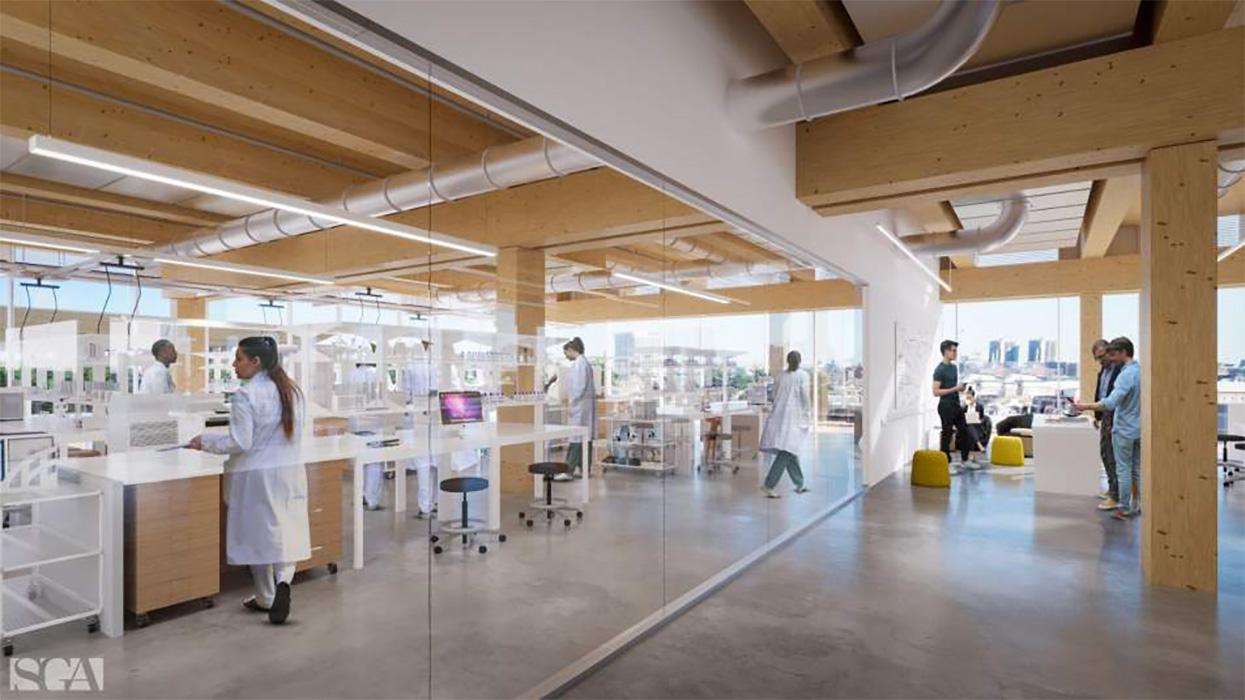
Thornton Tomasetti & SGA Partner on Mass Timber Life Sciences Concept
A vision for New England’s first mass timber laboratory development focuses on sustainability, resiliency and construction efficiency.
overview
Aspiring to create New England’s first mass timber laboratory development, Thornton Tomasetti has partnered with SGA to conceptualize a project that celebrates the beauty and inherent sustainability of natural wood.
The proposed location is an urban site within one of Boston’s leading life sciences clusters near the waterfront, and the development will comprise two mass timber structures: A nine-story building will contain research facilities, while a four-story building will offer hospitality-style amenities and incubator space. Mass timber construction offers many benefits, including a reduction in embodied carbon, carbon sequestering properties, improved construction efficiency and the potential for deconstruction at end of life.
highlights
- Four structural concepts were explored; ultimately a 33′ x 33′ clear span provided the most flexibility for interior programming.
- The structural framing system consists of stacked beams and girders.
- An intermediate column is introduced to delineate between potential benching and lab support zones, providing flexibility to accommodate a diverse group of tenants.
- On the interiors, exposed timber columns, beams, girders and CLT decking with showcase the warmth, texture and biophilic properties of the material.
- Using mass timber for the structure results in a 40% reduction of embodied carbon as compared to a steel structure.










